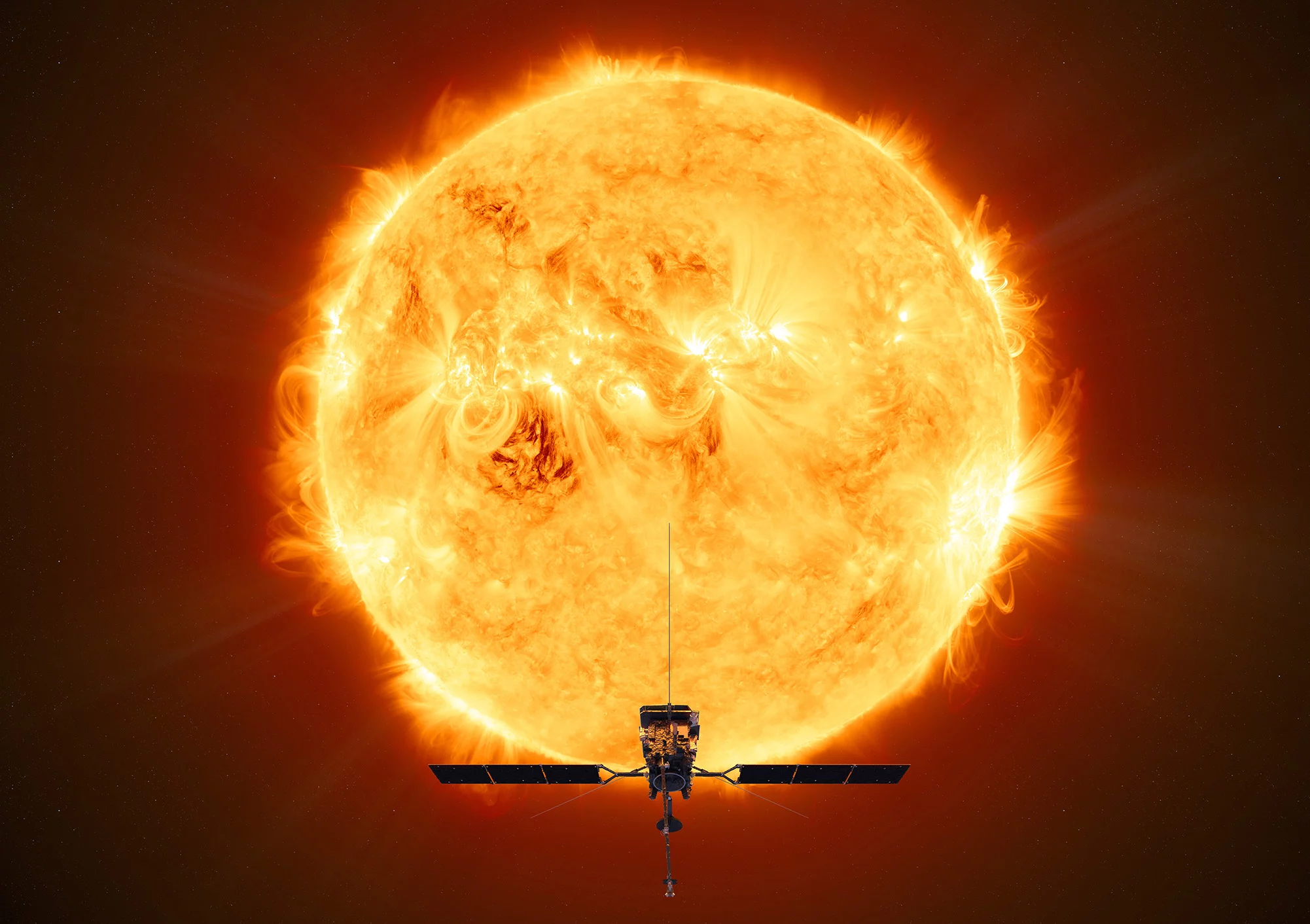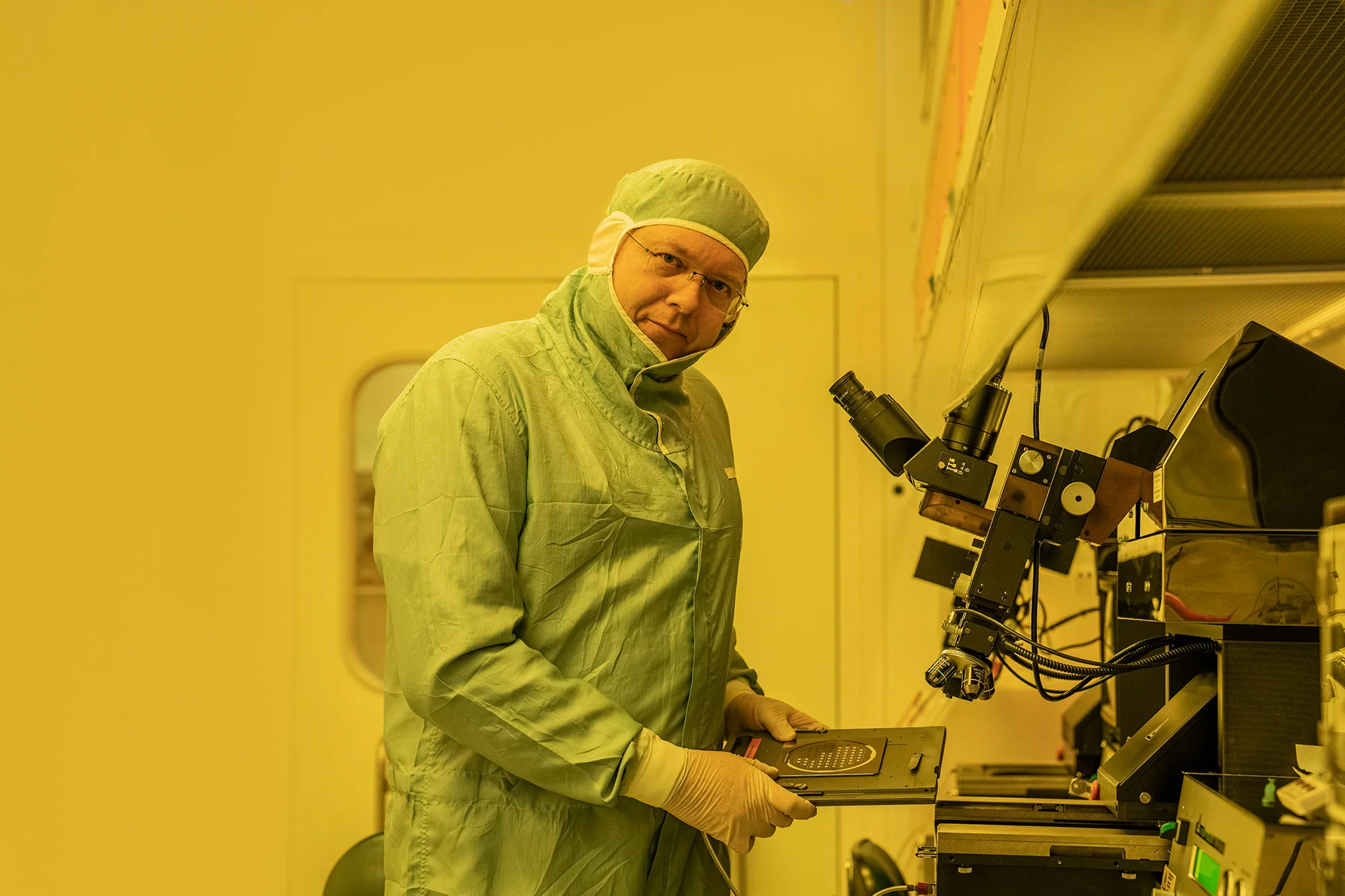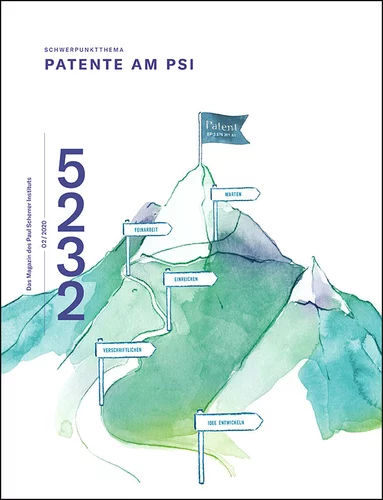PSI takes part in space research projects. This not only expands knowledge about our astronomical home, but also reinforces Switzerland's reputation as a reliable developer of sophisticated space equipment.
On the night of February 9-10, 2020, when the Solar Orbiter spacecraft takes off from Cape Canaveral, Florida, on its journey to the sun, Martin Bednarzik is excited. The engineer and former clean room manager at the Laboratory for Micro and Nanotechnology has, with his team, developed a small but very important component for the space probe. "Until an instrument is actually launched into space with a satellite, a lot of things can happen", he says. "I was all the more pleased to see the rocket lift off with our detectors on board."
The Solar Orbiter mission, a joint project of the European and US space agencies ESA and NASA, is expected to last at least seven years. The goal: With its numerous instruments the probe will investigate the causes of the solar wind – a stream of charged particles the sun constantly emits. When especially large quantities of these particles are thrown explosively into space, this solar wind swells to a solar storm, which can cause serious damage on and around the earth, for example to satellites, aircraft, or power grids. According to a recent ESA study, such an extreme event could cause damage of around 16 billion Swiss francs in Europe alone. To better understand the processes that take place inside our central star and learn how and when the devastating solar storms occur is ultimately in the interest of every inhabitant of the earth.
One of the ten instruments on the Solar Orbiter is the X-ray telescope STIX, which will capture images and X-ray spectra. STIX is a project of the University of Applied Sciences Northwestern Switzerland FHNW in Windisch. The colleagues there commissioned Bednarzik and his teammates at PSI to develop, test, and characterise the pixel detectors for the telescope. "For one part of this work, we even built a new clean room at PSI", says Bednarzik. The crucial components of the detector are semiconductor sensors made of cadmium telluride, 10 by 10 millimetres in area and one millimetre thick. They measure the energy and record the timing of incident X-rays during a solar flare. The data thus obtained can provide information about the processes involved in solar flares. The STIX telescope is expected to start operating at the end of 2021.
What's the outlook for the solar weather?
Solar Orbiter is just one of many space projects PSI is involved in. Space research has a long tradition in Switzerland: Already during the first moon landing in 1969, the only non-American experiment on board was a solar sail from the University of Bern, which Buzz Aldrin – the second man on the moon during the legendary Apollo 11 mission – unfurled even before the American flag. Since then, Switzerland has further consolidated its place in space research and is a highly regarded partner in scientific missions. Together with industry, PSI researchers are developing tools and technologies to ensure the success of such projects. Everyone benefits from this in one way or another, because without space exploration there would be no navigation devices or reliable weather forecasts. Analogous to the now quite accurate forecasts for weather on earth, researchers now want to better predict the so-called space weather – above all, whether there are signs that solar storms are on the way. To achieve this, with its Lagrange mission, ESA is planning an early warning system for such potentially dangerous events. "Among other things, we want to detect charged particles in space before they hit the earth", explains Wojciech Hajdas, a member of the Laboratory for Particle Physics and project manager at PSI.
In a joint mission, ESA and NASA plan to position two satellites at the so-called Lagrange points 1 and 5 between the earth and the sun. At these locations in space, the centrifugal force is in precise equilibrium with the gravitational forces of the sun and the earth, and satellites can rest there virtually effortlessly. The satellite at L5, which PSI is working on, will be equipped with nine instruments. Some of them observe activities on the sun and in doing so also capture parts of the central star that are hidden from the earth. Other instruments measure aspects of the situation at the Lagrange point itself, such as the amount of X-rays, the particle flux, and the size of the magnetic field.
If a dangerous flare is detected by the satellite, it still takes between a few hours and a few days to reach the earth – depending on which threat is noticeable where, whether irregularities can be observed on the sun's surface, or whether a detector is measuring particles or radiation at the Lagrange point. "In any case, this gives us some time to react, for example by getting astronauts out of orbit and adjusting aircraft routes", says Hajdas. The Swiss Space Office – the space department of the State Secretariat for Education, Research and Innovation – is providing financial support for the Lagrange mission.
PSI, with its many years of experience in the development and construction of detectors, is currently participating in preliminary studies for the Lagrange mission. The focus of this work is a radiation detector that records protons and electrons. These are the smallest high-energy charged particles and components of every atom. Such a detector, called IREM, flew into space as early as 2002. It was created in a partnership between ESA, PSI, and Contraves Space AG in Zurich and was part of an ESA mission called Integral. For 18 years this satellite has been measuring gamma radiation in space, for example from black holes, providing valuable data for a better understanding of the universe, and thus also of our solar system.
For one part of the work, we even built a new clean room.
For the Lagrange mission, PSI researchers are now developing a completely new, additional detector that records heavy ions, that is, charged helium, carbon, and other atoms. These too are particles the sun can spit out, potentially damaging satellites.
Testing materials for space equipment
Satellites and spacecraft with sensitive materials and electronics on board are exposed to constant particle bombardment by cosmic rays. Therefore it is important to conduct tests that show whether a device can survive in space over an extended period of time and how the stay might impair its functions. The Proton Irradiation Facility at PSI helps here, since cosmic rays consist predominantly of protons.
The particles required for these investigations are diverted at night and over the weekend from a proton accelerator that, during weekdays, supplies protons for the treatment of cancer patients. "At this facility we can produce all the kinds of proton spectra that can be found in space", says Wojciech Hajdas. In the experimental facility, other research institutions and companies also test the suitability of their materials for applications in space. More than 200 users from all over Europe use it every year. That is why devices co-developed or tested at PSI will continue to take long journeys into space in the future, to help solve the last mysteries of the universe.
Text: Brigitte Osterath



